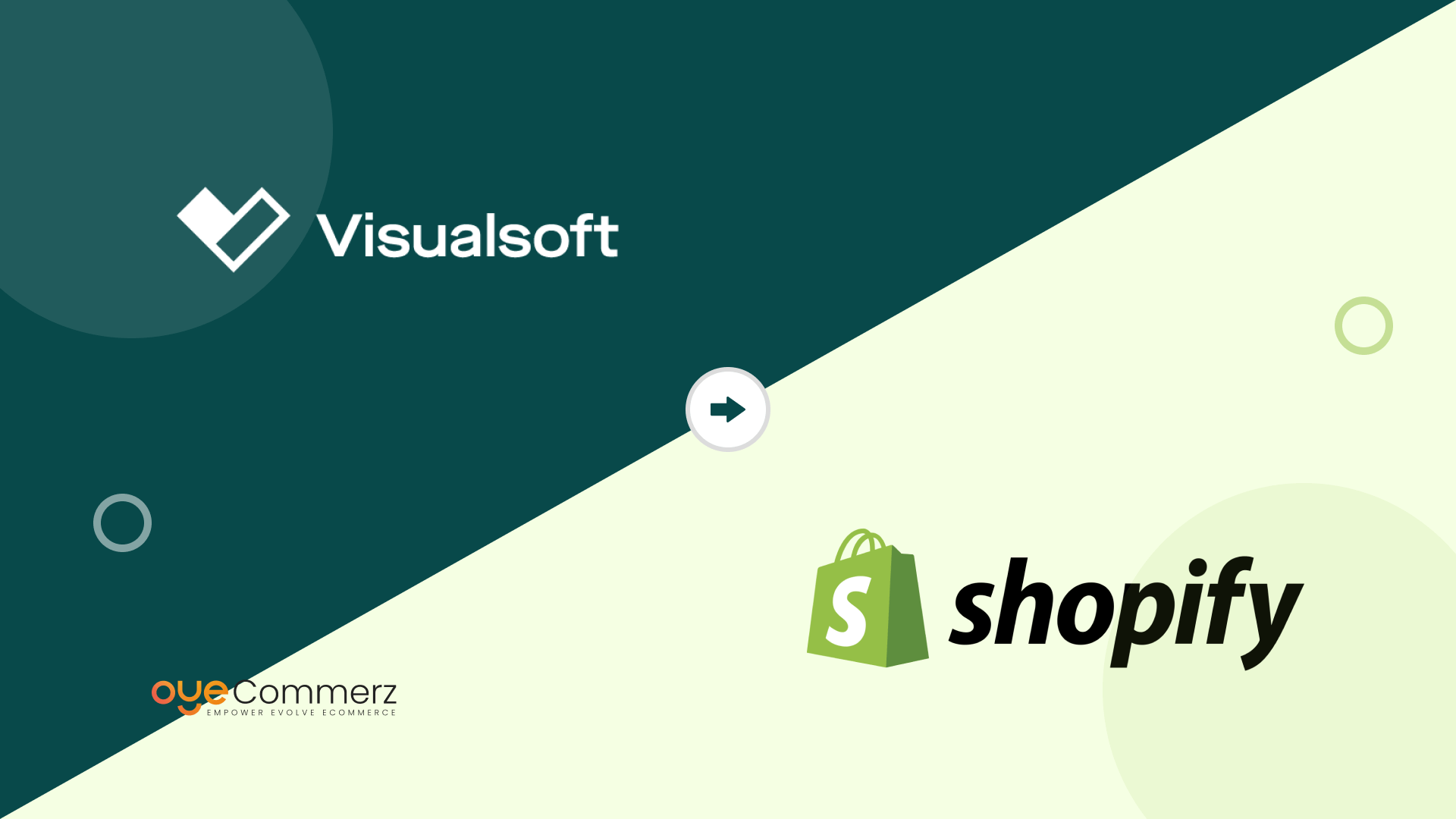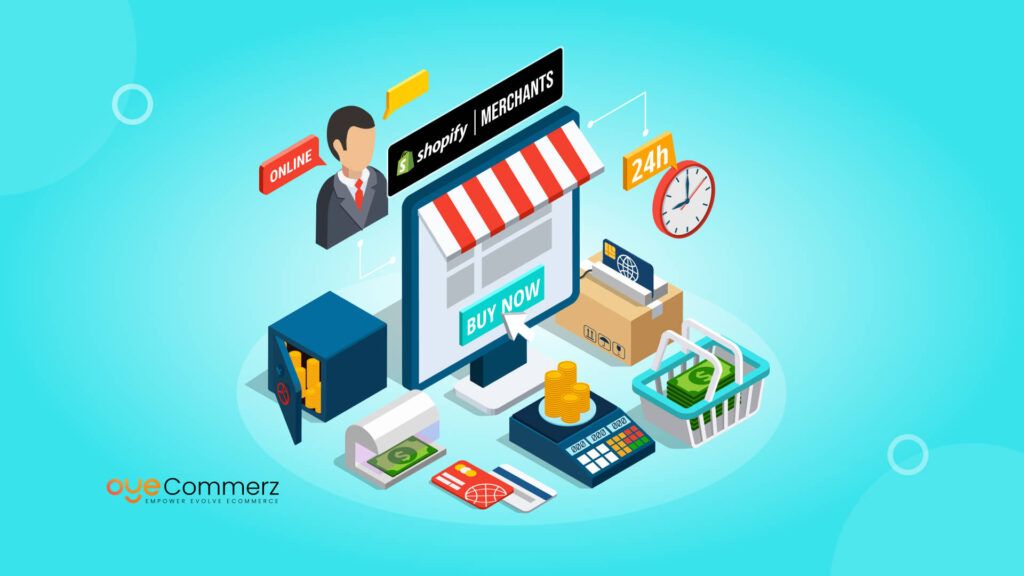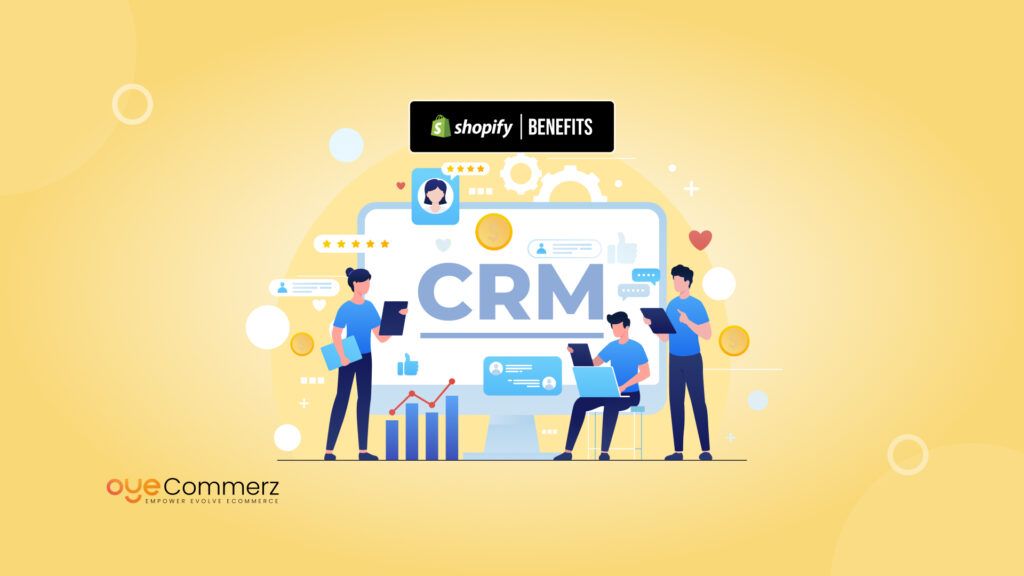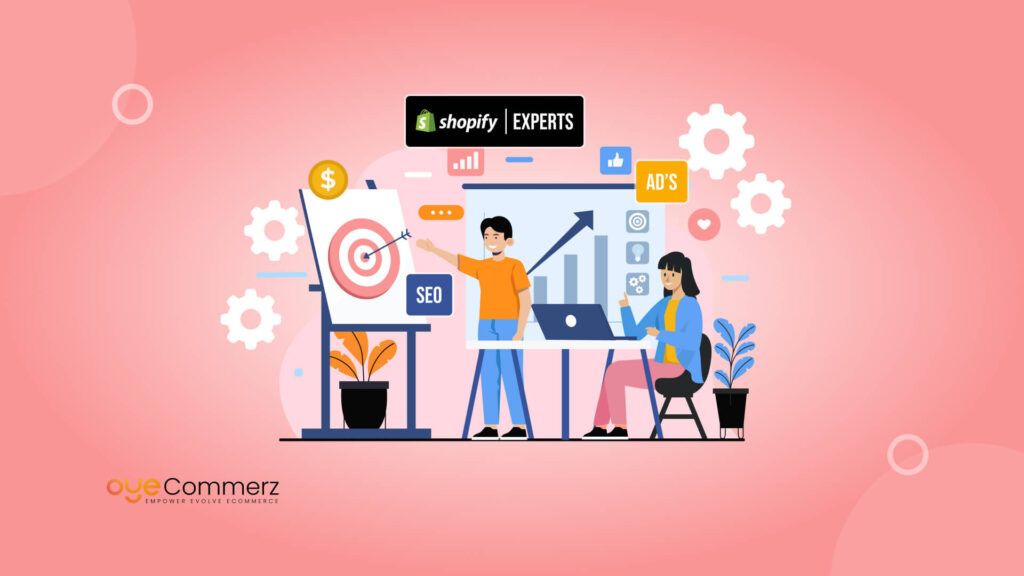Ready to level up your eCommerce game? If you’re stuck with Visualsoft and finding it hard to scale, streamline, or attract new customers, it might be time to make the switch to Shopify. Known for its user-friendly design, powerful features, and endless customization, Shopify is the go-to platform for modern businesses looking to grow fast without the tech headaches.
In this guide, we’ll walk you through the Visualsoft to Shopify migration process, step by step. You’ll learn how to maintain your data, improve performance, and unlock Shopify’s full potential. Let’s explore how this move can help you create an online store that’s faster, smarter, and ready for your next big leap.
Table of Contents
ToggleWhy Migrate from Visualsoft to Shopify?
Scalability and Growth
Shopify’s infrastructure is designed to support e-commerce businesses at any scale. Whether you’re a small-to-medium-sized business or looking to grow into a global brand, Shopify can handle it. Shopify’s cloud-hosted platform ensures your store remains functional, even with traffic spikes during peak seasons like Black Friday or special promotions. It also offers tools like Shopify Plus for enterprise-level features, providing the flexibility to expand without having to switch platforms again in the future.
On the other hand, Visualsoft, while suitable for mid-sized businesses, lacks the robust capabilities of Shopify when it comes to international scalability and technical flexibility.
Extensive App Ecosystem
Shopify’s app ecosystem is unparalleled. The platform offers over 6,000 apps in its App Store, which cover everything from marketing automation to inventory management and customer engagement tools. Visualsoft, by comparison, is more limited in this regard, making it harder to implement advanced features or third-party integrations without custom development. Shopify’s App Store allows users to enhance their stores quickly and easily with plug-and-play apps, saving valuable time and reducing development costs.
User-Friendly Interface
Shopify is well known for its ease of use, both on the backend for store owners and the front-end for customers. Visualsoft requires more technical knowledge and custom development to achieve the same level of design flexibility and ease of navigation that Shopify offers right out of the box. Shopify’s drag-and-drop editor makes it simple to update your store, add products, and customize your theme without needing coding skills.
Global Reach and Payment Gateway
Another crucial advantage of Shopify is its ability to handle multiple currencies, regions, and languages, which is perfect for businesses aiming to go global. Shopify also integrates with over 100 payment gateways, making transactions smoother for customers across various regions. Visualsoft, while equipped for UK and European markets, does not offer the same international versatility.
Guide for Visualsoft to Shopify Migration
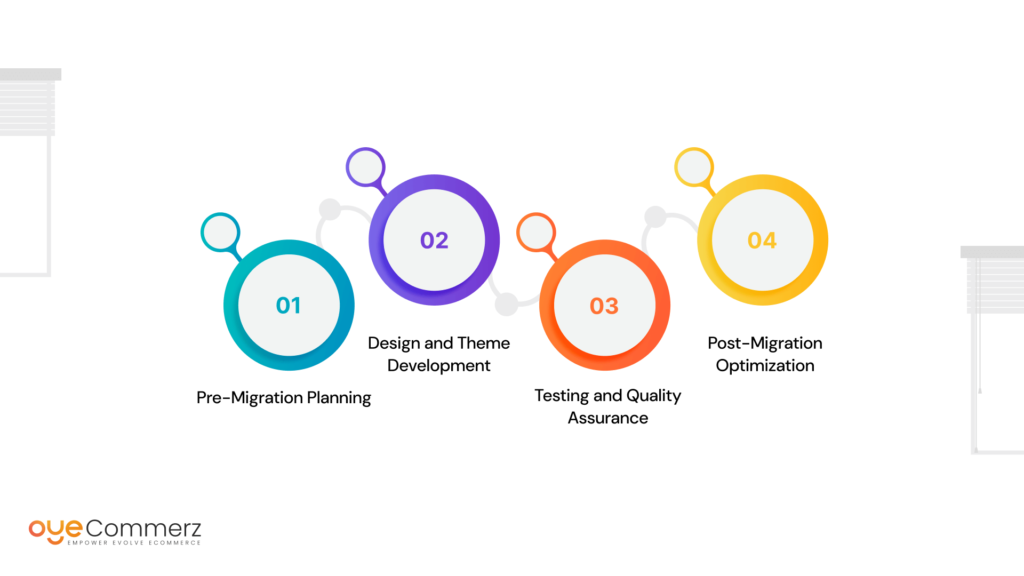
Pre-Migration Planning: Setting the Foundation
a) Goal Setting
Before embarking on the migration process, clearly define the business objectives you want to achieve. Common goals include improving site speed, streamlining inventory management, enhancing customer experience, or integrating more advanced marketing tools. Defining these goals will shape your migration strategy and help set key performance indicators (KPIs) to measure the migration’s success.
b) Backing Up Visualsoft Data
Before migrating, ensure that you have a comprehensive backup of all critical data from Visualsoft, including product details, customer information, and order history. Exporting data from Visualsoft typically involves generating CSV files that contain this information. Be sure to backup:
- Product listings (including SKUs, descriptions, images, and pricing)
- Customer account information
- Order history and transaction details
- Content like blog posts and website copy
Having this data on hand helps prevent potential loss or corruption during the migration process.
c) Audit Current Analytics and Performance
Use tools like Google Analytics and Visualsoft’s in-built analytics to conduct a thorough audit of your current performance. Take note of current traffic levels, conversion rates, bounce rates, and customer behavior. Establish a clear baseline so you can accurately measure the impact of the migration and identify any areas where your Shopify store may need improvement after going live.
Data Migration: Transferring Products, Orders, and Customers
Migrating from one platform to another without losing critical data is one of the biggest challenges during a platform switch. Shopify makes this process relatively simple by offering built-in tools, but for larger stores, you may need third-party services or manual transfers to ensure data integrity.
a) Product Data Migration
- Exporting from Visualsoft: Use Visualsoft’s data export tool to generate CSV files containing all of your product information. This includes SKUs, titles, descriptions, inventory counts, and categories.
- Importing to Shopify: Shopify supports CSV imports for product data. When uploading product data, ensure that all fields are correctly mapped in Shopify. You can use Shopify’s bulk import tool to handle this process, or third-party apps like Matrixify (formerly Excelify) for more complex migrations.
Ensure that product images, variants (such as size and color), and pricing structures are transferred correctly. Shopify’s flexible product management system allows you to easily set up collections and tags for better inventory organization and navigation.
b) Customer and Order Migration
Migrating customer accounts and order histories is crucial for maintaining customer loyalty and business continuity. This involves transferring:
- Customer names, emails, and purchase history
- Passwords and account details (though Shopify may require users to reset passwords due to encryption protocols)
- Order histories, so you can continue handling refunds, exchanges, and customer service seamlessly
To handle these transfers, Shopify offers built-in tools for importing customer data. Apps like Cart2Cart also help automate the process of migrating customers and orders without losing key information.
c) Preserving Historical Data
While transferring historical data like orders and customer interactions is crucial, some platforms may not support the export of data exactly as it exists on Visualsoft. In such cases, you may need custom scripts or professional migration services to ensure that all your historical data is migrated correctly.
Design and Functionality Migration
While Shopify provides many customizable templates, migrating your store’s existing design and unique features is not always a straightforward process. This section covers how to replicate and improve your store’s design and functionality on Shopify.
a) Choosing a Theme
Shopify offers a wide range of themes that are mobile-responsive, modern, and highly customizable. Browse through Shopify’s theme store, where you’ll find both free and paid themes designed for different industries, such as fashion, electronics, or beauty. Each theme is optimized for speed and mobile browsing.
Select a theme that closely resembles your Visualsoft store to maintain consistency in branding and user experience. Shopify allows you to preview themes before committing, making it easier to find a design that suits your brand.
b) Customizing Your Theme
If your Visualsoft store has unique design elements or custom functionality, you’ll need to replicate those on Shopify. Shopify’s Liquid templating language allows for customizations in HTML, CSS, and JavaScript, but if you’re unfamiliar with coding, you may want to hire a Shopify expert to help you.
Common customizations include:
- Custom checkout flows
- Specialized product pages with unique layouts
- Advanced filtering options
- Dynamic content areas
For businesses that used custom-built features in Visualsoft, Shopify also offers the Shopify Plus program, which provides more robust tools for customizing checkout pages, automating workflows, and integrating back-end systems.
c) Preserving Branding
Migrating to Shopify doesn’t mean you have to completely overhaul your store’s look and feel. Ensure that your color scheme, logo, fonts, and overall branding stay consistent. Shopify’s theme editor makes it easy to adjust these elements to reflect your brand identity, so customers will recognize your store even after the migration.
Post-Migration Testing and Optimization
After completing the migration, it’s essential to test every aspect of your new Shopify store before officially going live. This ensures that everything functions properly and that no critical data was lost in the process.
a) Functionality Testing
- Test all product pages to ensure they display correctly, and that customers can add products to their cart, select variants, and complete purchases.
- Ensure that customer accounts, login processes, and order histories are functioning properly.
- Verify that shipping, tax, and payment settings are correctly configured for each region you serve.
b) Payment Gateways
Set up your payment gateways and run test transactions to ensure that orders process smoothly. Shopify integrates with over 100 payment providers, so you can offer your customers the payment methods they prefer, such as credit cards, PayPal, and Apple Pay.
c) Shipping and Fulfillment
Set up shipping zones, rates, and fulfillment options. Shopify offers integrations with leading logistics providers, enabling automated fulfillment. If your Visualsoft store used custom shipping settings, replicate those in Shopify and ensure they work seamlessly during checkout.
d) Monitoring Analytics
Use Shopify’s built-in analytics tools or integrate with Google Analytics Enhanced Ecommerce to track customer behavior and sales performance post-migration. Keeping an eye on metrics like conversion rates, abandoned carts, and customer journeys will help identify areas where further optimization is needed.
Common Challenges in Migration and How to Avoid Them
Despite careful planning, migrations can still present challenges. Here are some common pitfalls to watch out for and how to address them.
a) Downtime
Even a small period of downtime during migration can negatively impact sales and customer satisfaction. To avoid this, plan your migration during low-traffic periods (such as late night or weekends) and set up a temporary maintenance page to notify customers that your site is undergoing improvements.
Shopify also offers tools to handle real-time migrations, allowing you to switch over with minimal disruption.
b) Data Loss
Data loss during migration is a significant concern, especially when transferring customer data, orders, and product details such as product descriptions, customer accounts, and order histories. To avoid this, make sure to back up all Visualsoft data before migration. Additionally, ensure that all CSV files are mapped correctly during import to Shopify. For large or complex migrations, using professional migration services like Cart2Cart or working with a Shopify expert can help prevent data loss and ensure that all critical data is transferred accurately.
c) Third-Party Integration Issues
While Shopify’s App Store offers thousands of integrations, you may run into compatibility issues with some of the custom-built integrations or third-party software that your Visualsoft store relied on. Ensure that you’ve identified all critical third-party tools and integrations before starting the migration. In some cases, you may need to seek out alternative apps on Shopify that provide similar functionality or work with a developer to create custom solutions.
d) Customer Experience Changes
A new platform can change how customers interact with your store. After migration, monitor customer feedback closely and be prepared to make quick adjustments if users report difficulties navigating the site, checking out, or managing their accounts. Maintaining a consistent user experience is crucial to keeping your customer base happy throughout the transition.
Maximizing Efficiency with Shopify’s Ecosystem
One of Shopify’s greatest strengths is its extensive ecosystem of tools and apps that can help streamline your store’s operations. From marketing automation to inventory management, Shopify provides a wide range of solutions to enhance efficiency.
a) Marketing Automation
Automating your marketing efforts can help drive sales while saving time. Shopify integrates with apps like Klaviyo and Omnisend, which allow you to create personalized email marketing campaigns, send targeted push notifications, and automate abandoned cart reminders.
These apps make it easy to segment your customer base and send them relevant messages at the right time. You can also track the effectiveness of your campaigns with detailed analytics, helping you fine-tune your marketing strategies over time.
b) Inventory Management
For larger stores with complex inventories, apps like QuickBooks and Stocky (for Shopify POS) offer robust inventory management tools. These apps allow you to automate stock tracking, manage suppliers, and sync your inventory across multiple channels, including physical stores and online marketplaces like Amazon and eBay.
c) Customer Support Tools
Improving customer support is critical for any growing business. Shopify integrates with customer support platforms like Gorgias and Zendesk, which offer live chat, email support, and social media integrations. These tools allow you to manage all customer interactions from a single dashboard, making it easier to provide fast, efficient service.
d) Reporting and Analytics
Shopify offers built-in reporting tools that give you insights into your store’s performance. For more advanced analytics, you can integrate with Google Analytics Enhanced Ecommerce or use apps like Lifetimely to track customer lifetime value, profitability, and sales trends.
Understanding your key performance indicators (KPIs) allows you to make data-driven decisions that improve your store’s performance over time. Shopify’s analytics tools help you track everything from sales and inventory levels to customer behavior and marketing performance.
Future-Proofing Your Shopify Store
Migrating to Shopify isn’t just about fixing current problems; it’s about positioning your business for future growth. Shopify’s flexible architecture, extensive app ecosystem, and scalable plans make it an excellent choice for businesses that want to expand.
a) Expand into New Markets
One of Shopify’s standout features is its ability to support multi-currency and multi-language stores, making it easier to expand into international markets. Shopify’s international selling tools, including Shopify Markets, enable you to manage multiple storefronts in different languages and currencies from a single dashboard.
b) Integrate with New Sales Channels
Shopify integrates with a wide range of sales channels, including social media platforms like Instagram, Facebook, and Pinterest, as well as online marketplaces like Amazon and eBay. By integrating your Shopify store with these platforms, you can reach new audiences and increase sales without having to manage multiple inventories or customer accounts.
c) Leveraging Shopify Plus for Enterprise Growth
For large or fast-growing businesses, Shopify Plus offers advanced features like unlimited staff accounts, advanced reporting, and API access for custom development. Shopify Plus also provides enhanced checkout customization, allowing businesses to create bespoke checkout experiences that improve conversion rates.
Additionally, Shopify Plus customers gain access to Shopify Flow, an automation tool that enables you to automate repetitive tasks, such as tagging high-value customers, updating inventory levels, and sending custom marketing messages based on customer behavior.
d) Regular Store Optimization
Even after migration, it’s essential to regularly review and optimize your Shopify store. Tools like Hotjar and Lucky Orange allow you to monitor user behavior through heatmaps and session recordings, helping you identify friction points in the customer journey. You can also use Google Optimize to run A/B tests on different page elements to improve conversion rates.
Regular store optimization ensures that your Shopify store continues to perform at its best, even as customer preferences and industry trends evolve.
Ready to Migrate from Visualsoft to Shopify? Oyecommerz is Here to Help!
At Oyecommerz, we specialize in seamless Shopify Plus migrations tailored to your business’s unique needs. Whether you’re a small business or a large enterprise, our expert team is dedicated to making your Visualsoft to Shopify migration as smooth and efficient as possible. With years of experience, we’ve successfully helped countless businesses build and scale their Shopify e-commerce stores, ensuring every detail—from data migration to app integration and design—is handled with precision.
Contact us today to get started on your journey from Visualsoft to Shopify and discover how we can transform your e-commerce operations!
Contact to Migrate your Site to Shopify Now
Conclusion
Migrating from Visualsoft to Shopify is a strategic move for enterprise-level e-commerce businesses looking to scale efficiently. Shopify Plus offers unparalleled flexibility, scalability, and a vast ecosystem of apps to enhance your store’s functionality. By following the right migration process, integrating essential apps, and continually optimizing your Shopify store, you can unlock new growth opportunities and improve your overall business performance.
Oyecommerz specializes in Visualsoft to Shopify migrations, ensuring a seamless transition for businesses aiming to optimize their e-commerce operations. Get in touch today to explore how we can help you migrate to Shopify Plus for maximum efficiency and growth.

